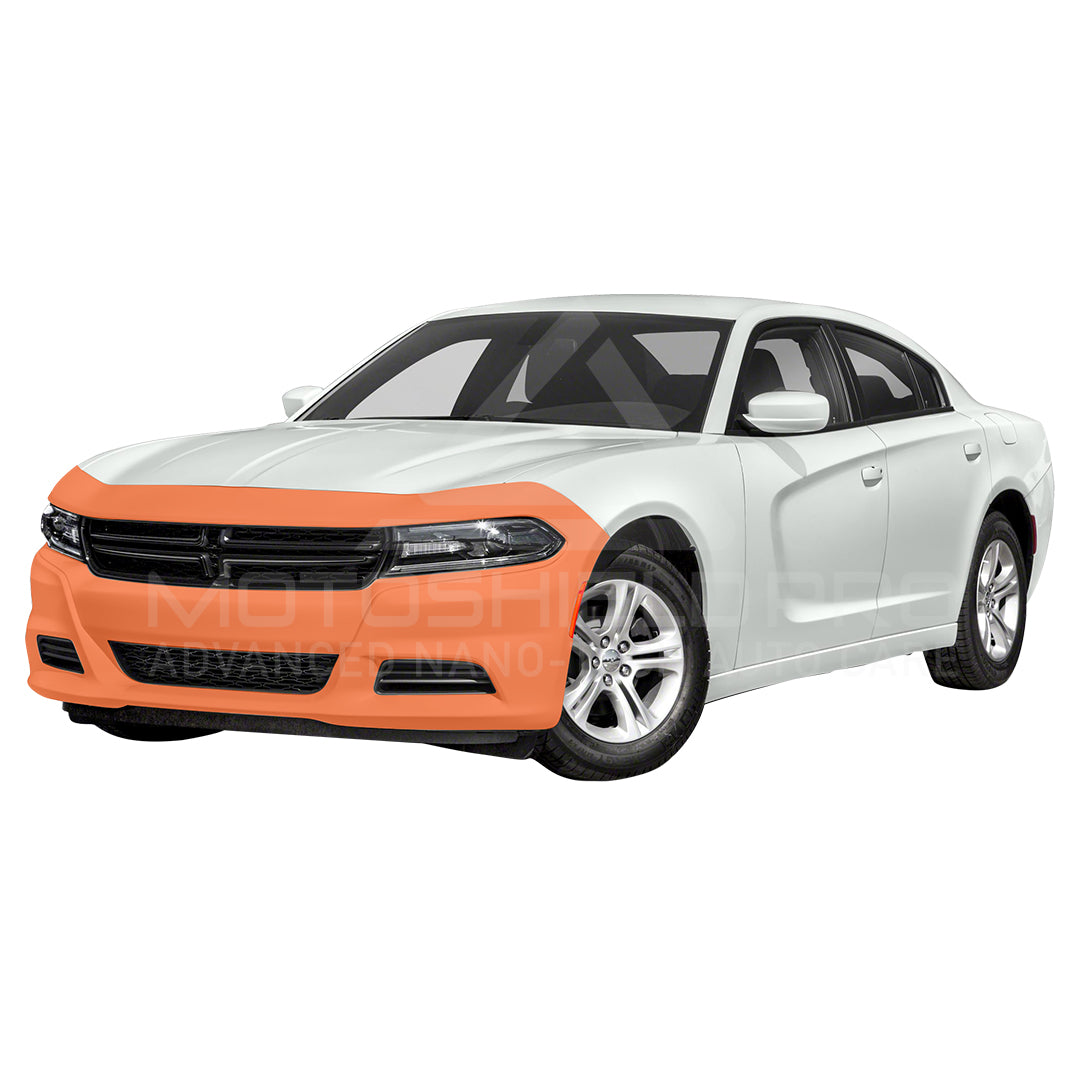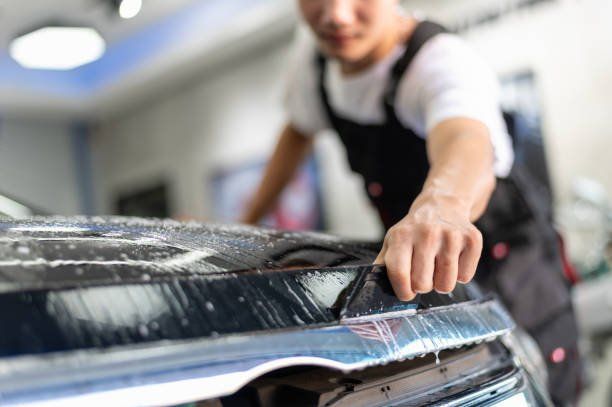Vital Insights on the Uses and Advantages of Paint Defense Film for Vehicle Treatment
The application of Paint Defense Movie (PPF) has become a very useful approach for car proprietors seeking to maintain the integrity and look of their cars. As we explore the various advantages and types of PPF, as well as the complexities involved in its application and upkeep, it becomes evident that recognizing these elements is essential for any vehicle care enthusiast.
What Is Paint Defense Film?
Paint Defense Movie (PPF) is a clear, durable polyurethane product developed to safeguard a vehicle's exterior surfaces from damages triggered by ecological elements and roadway particles. This movie is especially crafted to soak up effect, protecting against scrapes, chips, and various other kinds of wear that can occur during day-to-day driving. PPF can be applied to different parts of an automobile, including the hood, fenders, bumpers, and side mirrors, providing a safety barrier that assists keep the car's visual charm.

Furthermore, developments in PPF technology have actually resulted in self-healing homes, permitting minor scrapes to disappear in time when subjected to heat. This innovative option not just improves the durability of a car's exterior yet additionally adds to maintaining its resale value, making it a wise investment for vehicle lovers and daily vehicle drivers alike.
Advantages of Paint Protection Movie
One of the primary advantages of Paint Security Film (PPF) is its ability to dramatically decrease the danger of damages from everyday damage. This includes protection versus ecological contaminants, such as bird droppings, tree sap, and roadway particles, which can harm the car's surface. The movie acts as an obstacle, absorbing influences that would certainly otherwise leave scrapes or chips on the paint surface area.
Additionally, PPF is created to be self-healing, meaning that small abrasions can disappear with exposure to heat, maintaining the automobile's visual allure. This feature makes certain that the protective layer stays efficient gradually, preserving the vehicle's pristine appearance.
Another benefit is its UV resistance. PPF assists stop paint fading created by long term direct exposure to sunshine, consequently preserving the lorry's resale worth. The application of PPF can simplify the cleaning process, as pollutants are less likely to bond to the surface area.
Finally, PPF is personalized and can be related to certain areas of the vehicle, enabling proprietors to focus security where it is most required (Paint Protection Film Denver). Generally, Paint Defense Film provides a comprehensive remedy for maintaining a vehicle's outside stability and look
Kinds Of Paint Defense Movie
Different types of Paint Protection Film (PPF) are available to deal with different demands and preferences of car proprietors. The most common types include clear bra movies, which are made to be virtually undetectable while offering robust protection versus scrapes, chips, and other ecological damage. These movies are suitable for those who wish to maintain the original appearance of their car.
One more alternative is tinted PPF, which uses both protection and visual enhancement. Available in a selection of shades and coatings, colored movies can completely alter the appearance of an automobile or straight from the source highlight specific locations, making them a popular selection for personalization.
Self-healing PPF is an additional cutting-edge type that can repair small scrapes and swirl marks with heat exposure, guaranteeing lasting protection and appearances. In addition, textured PPF can give a matte finish, attracting proprietors that prefer a non-glossy look.
Additionally, specialized films created for certain applications, such as fronts lights or indoor surface areas, are available. Each kind of PPF supplies unique advantages, allowing vehicle proprietors to pick the most suitable choice for their particular requirements and design choices.
Application Process and Factors To Consider
Proper application of Paint Protection Movie (PPF) is vital for accomplishing ideal results and guaranteeing long-lasting protection. The application process begins with precise surface prep work, that includes cleaning up the car thoroughly to eliminate dirt, wax, and oil. Any blemishes on the paint surface should be corrected, as these can become amplified under the movie.
Following, the movie is thoroughly determined and cut to fit particular areas of the car. This permits for changes prior to the movie adheres completely.
Temperature and moisture play substantial roles in the application procedure. Ideally, the atmosphere should be regulated, with a temperature level series of 60 ° F to 80 ° F and reduced moisture to stop condensation under the film. Once positioned, a squeegee is utilized to get rid of air bubbles and guarantee full bond.
Maintenance and Treatment for PPF
Maintaining Paint Protection Film (PPF) is necessary for protecting its performance and expanding its life expectancy. redirected here Regular care not just improves the look of your automobile however likewise makes sure that the PPF remains to provide optimal defense versus environmental impurities, UV rays, and physical damages.
To maintain PPF, begin with regular washing making use of a pH-balanced auto hair shampoo. Prevent abrasive sponges; rather, go with a soft microfiber cloth, which will certainly avoid damaging the surface. It's advisable to wash the vehicle every two weeks or more frequently in extreme problems.

For added protection, consider using a ceramic layer over the PPF. This enhances gloss and offers an extra layer of defense versus pollutants. Additionally, prevent making use of extreme chemicals or unpleasant cleaners that can weaken the film.
Routine evaluations for indications of damages, such as peeling or staining, need to be carried out - Paint Protection Film Denver. Immediately addressing any type of problems can substantially lengthen the life of your paint protection movie, ensuring your car continues to be in immaculate problem
Verdict
